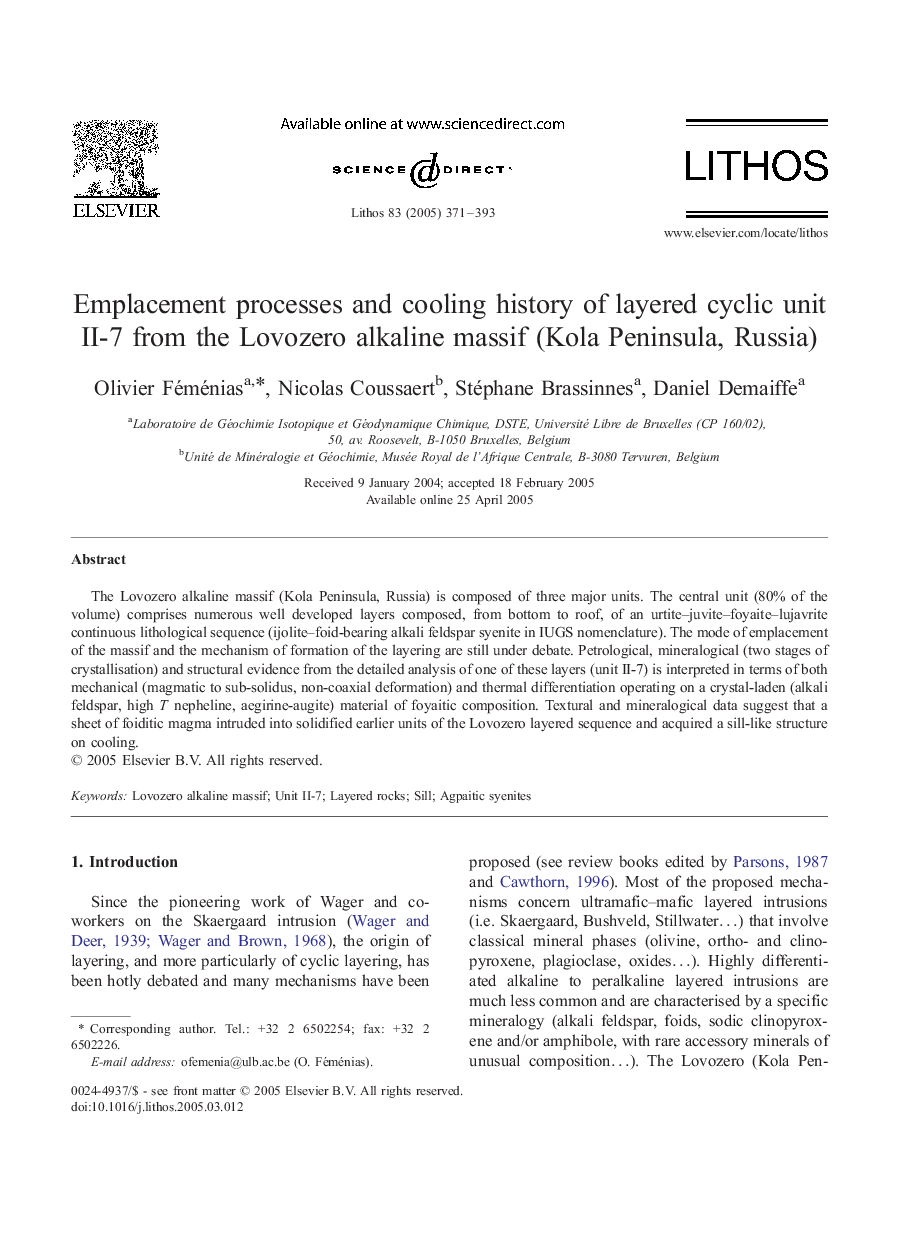| Article ID | Journal | Published Year | Pages | File Type |
|---|---|---|---|---|
| 9531949 | Lithos | 2005 | 23 Pages |
Abstract
The Lovozero alkaline massif (Kola Peninsula, Russia) is composed of three major units. The central unit (80% of the volume) comprises numerous well developed layers composed, from bottom to roof, of an urtite-juvite-foyaite-lujavrite continuous lithological sequence (ijolite-foid-bearing alkali feldspar syenite in IUGS nomenclature). The mode of emplacement of the massif and the mechanism of formation of the layering are still under debate. Petrological, mineralogical (two stages of crystallisation) and structural evidence from the detailed analysis of one of these layers (unit II-7) is interpreted in terms of both mechanical (magmatic to sub-solidus, non-coaxial deformation) and thermal differentiation operating on a crystal-laden (alkali feldspar, high T nepheline, aegirine-augite) material of foyaitic composition. Textural and mineralogical data suggest that a sheet of foiditic magma intruded into solidified earlier units of the Lovozero layered sequence and acquired a sill-like structure on cooling.
Keywords
Related Topics
Physical Sciences and Engineering
Earth and Planetary Sciences
Geochemistry and Petrology
Authors
Olivier Féménias, Nicolas Coussaert, Stéphane Brassinnes, Daniel Demaiffe,
